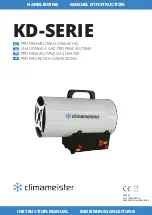
6 • Residen al Electric Water Heater Use and Care Guide
GETTING STARTED
GET
TING S
TAR
TED
Figure 1 -
Flexible connectors use compres-
sion fittings and do not require soldering.
Figure 2 -
Use a non-contact circuit tester
to insure that the power is off before you
work on a circuit.
Figure 3 -
Install a Pressure Reducing Valve
set to 50 to 60 PSI.
1
Review all of the instruc ons
before you begin work.
Improper installa on can
damage the water heater, your home
and other property, and can present
risks of serious injury or death.
2
Check with your local and
state authori es for any local
or state codes that apply to
your area. In the absence of local and
state codes, follow Na onal Fire
Protec on Associa on (NFPA-70) and
the current edi ons of the Na onal
Electric Code (NEC) and the Interna-
onal Plumbing Code (IPC). The
instruc ons in this manual comply with
na onal codes, but the installer is
responsible for complying with local
codes.
Massachuse s code requires this wa-
ter heater to be installed in accordance
with Massachuse s 248-CMR 2.00 and
248-CMR 5.00: State Plumbing Code.
Other local and state authori es may
have similar requirements or other
codes applicable to the installa on of
this water heater.
3
Before you start, be sure you
have, and know how to use, the
following tools and supplies:
• Plumbing tools and supplies appro-
priate for the type of water pipes in
your home
• Threaded connectors (Figure 1) for
the cold and hot water pipes
• For homes plumbed with plastic
pipe, use threaded connectors suit-
able for the specific type of plastic
pipe used: CPVC and PEX (cross-
linked polyethylene). Do not use
PVC pipe.
•
For homes with copper pipes,
you may purchase connector
kits with compression fittings
that don’t require soldering
(Figure 1). Compression fittings
are easier to install than sol-
dering copper pipes.
• Teflon® tape or pipe joint com-
pound approved for potable water
• Tools to make the electrical connec-
tions (for example, screwdrivers,
wire strippers)
• Non-Contact circuit tester to check
for power (Figure 2)
• Water Pressure Gauge (Figure 4)
Recommended Accessories:
• Suitable drain pan (Figure 6 on page
8)
• Automatic leak detection and shut-
off device
• Pressure Reducing Valve (Figure 3
on page 6)
• Thermal Expansion Tank (Figure 5
on page 7)
• Point-of-use Thermostatic Mixing
Valves (Figure 7 on page 8)







































